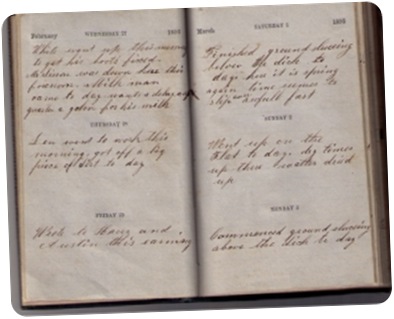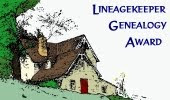A cascade of vintage quilting fabric brought back memories of growing up with a mother who was a quilter. As the caboose in the family, I frequented the quilting bees she attended because there was no one at home to tend me.
My parents raised my older siblings during the depression and were grateful to have the cloth from flour sacks to make pajama’s, aprons and probably play blouses to wear under my sister’s jumpers.
Even though I was born two decades later than them, I also heard the constant refrain; “Wear it out. Use it up or do without”. The extreme lessons learned in the depression never left my parents minds.
Hence, the pattern of the vintage fabric produced a flashback of laying my bored, tired young body under a quilt frame with a quilt stretched across it. Surrounding me were the legs of a dozen women wearing similarly patterned dresses, thick hose and ‘sturdy’ shoes. I can still hear their constant chatter, laughter and the occasional ‘Ouch!’ from an errant stitch. Once the “chickens in the coop” started to cluck, my eyes rarely stayed open for more than two minutes. Maybe someone should sell that sound as a sleep aid for children and men.
Of course I married a quilter. Not necessarily by conscious thought, but certainly to my delight. The craft has passed on to our daughters and daughters-in-law. When I sit in my chair in the living room and they all gather to discuss their latest projects, designs and favorite fabric patterns, the two minute rule is still in effect. Cackle, cackle, ….. snore….
Unfortunately, all of the guys in our family think there is a downside to our wives hobby. Sometimes we are dragged by them, (usually screaming), to a fabric store.
Reading the Pickles comic strip makes me think its creator has a copy of the security tapes from my visits to these stores. I’m obviously the inspiration for the strips covering this subject.


Mom’s quilting legacy lives on in the current generations. They don’t make many quilts out of old Levi’s and worn out shirts like Mom did, but they do help several quilting stores remain viable in our area.
I’m glad the legacy is being passed on to our granddaughters. They are full of creative ideas and are bonding with the older quilters in the family in ways that make me smile.
I wonder how far back the quilting talent can be traced in their lineage. It was probably less ‘fun’ for the earlier generations. Our grandmothers were sewing clothing to wear and quilts to warm their beds rather than the current creations that are produced under less pressure and thus with probably a little more enjoyment of the work.
Looking at some of the designs in my grandmothers old quilts makes me think that there was more than a little whimsy stitched into their designs though. The patterns are obvious, but when you explore the stitches closely, you often discover the quilters initials and other signature stitch designs. If you spend just a few minutes more, you can see the elongated, crooked and loose stitches that were made by the young folks in the family who were being taught the craft as they sat in on a quilting bee.
All the quilts our ladies have made are Treasure. Pure Treasure.
That’s family history you can touch!











